Over 120 minutes, Ballard FC had gone toe-to-toe with Spokane Velocity. The two Washington-based soccer teams were facing off in the first round of the U.S. Open Cup for the second straight year, and despite the teams' difference in professional status, there was virtually no daylight between them. As was the case in 2024, Velocity brought a full squad of professional players into their cross-state derby. And as was the case in 2024, Ballard was composed entirely of amateur talent.
Moments after the official game clock stopped ticking upward, Velocity found their breakthrough. Colombian striker Anuar Pelaez ripped a shot from the right wing that deflected off a Ballard defender and caromed into the net for what seemed like an obvious game-winner.
But Ballard continued to press. Former Seattle Sounders prospect Austin Brummett put his laces through a shot from the top of the penalty area that Velocity goalkeeper Ryan Bilichuk parried over the bar. A few minutes later, Ballard appeared to get a dramatic equalizer when Harrison Bertos, forward from his position on defense, beat Bilichuk with a volley from close range, sending the standing-room-only, capacity crowd of about 1,500 at Interbay Stadium into pandemonium.
But it was not meant to be. As soon as Bertos began celebrating, the offside flag went up. No goal. Ballard ran out of time. Velocity advanced.
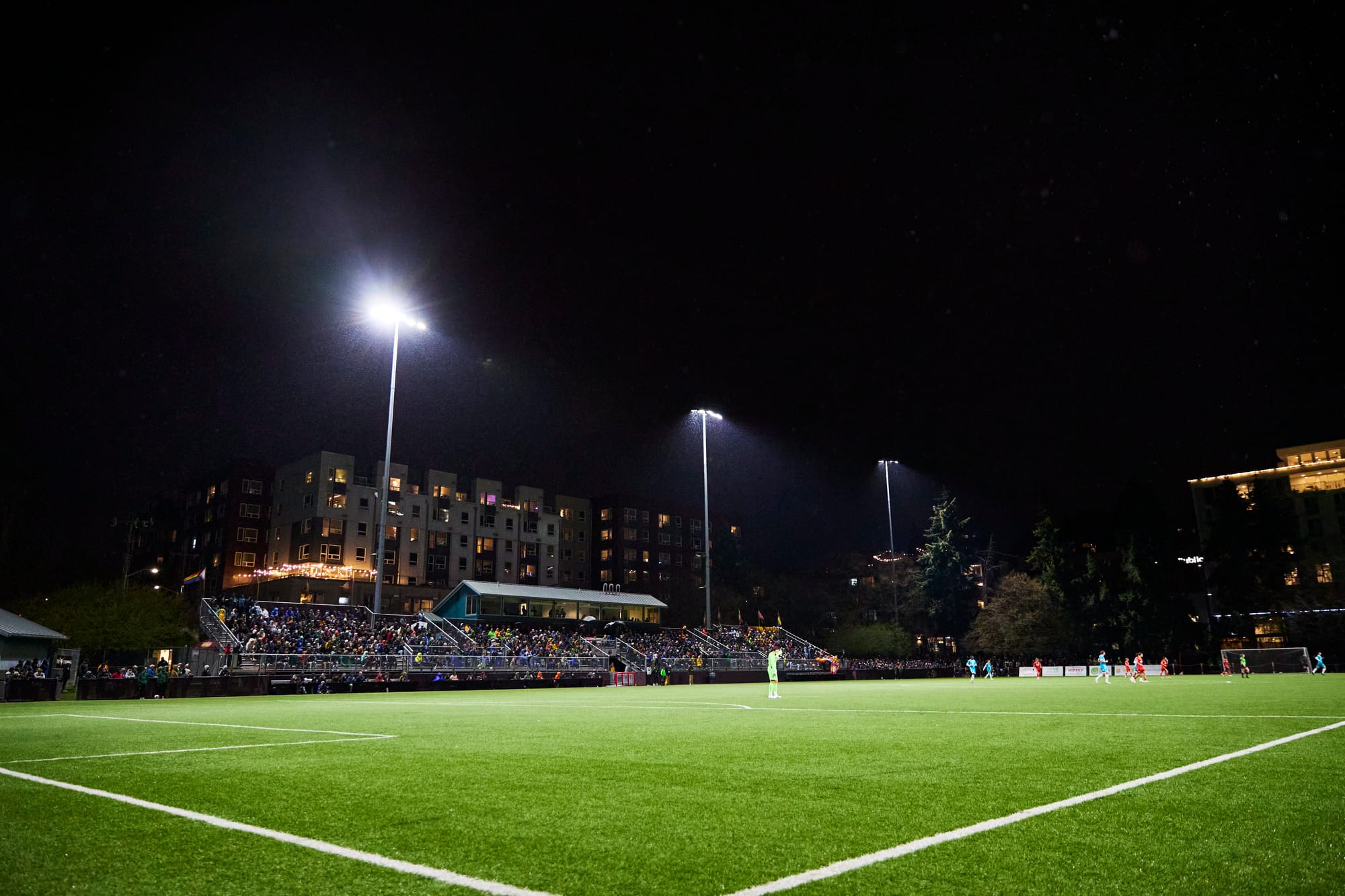
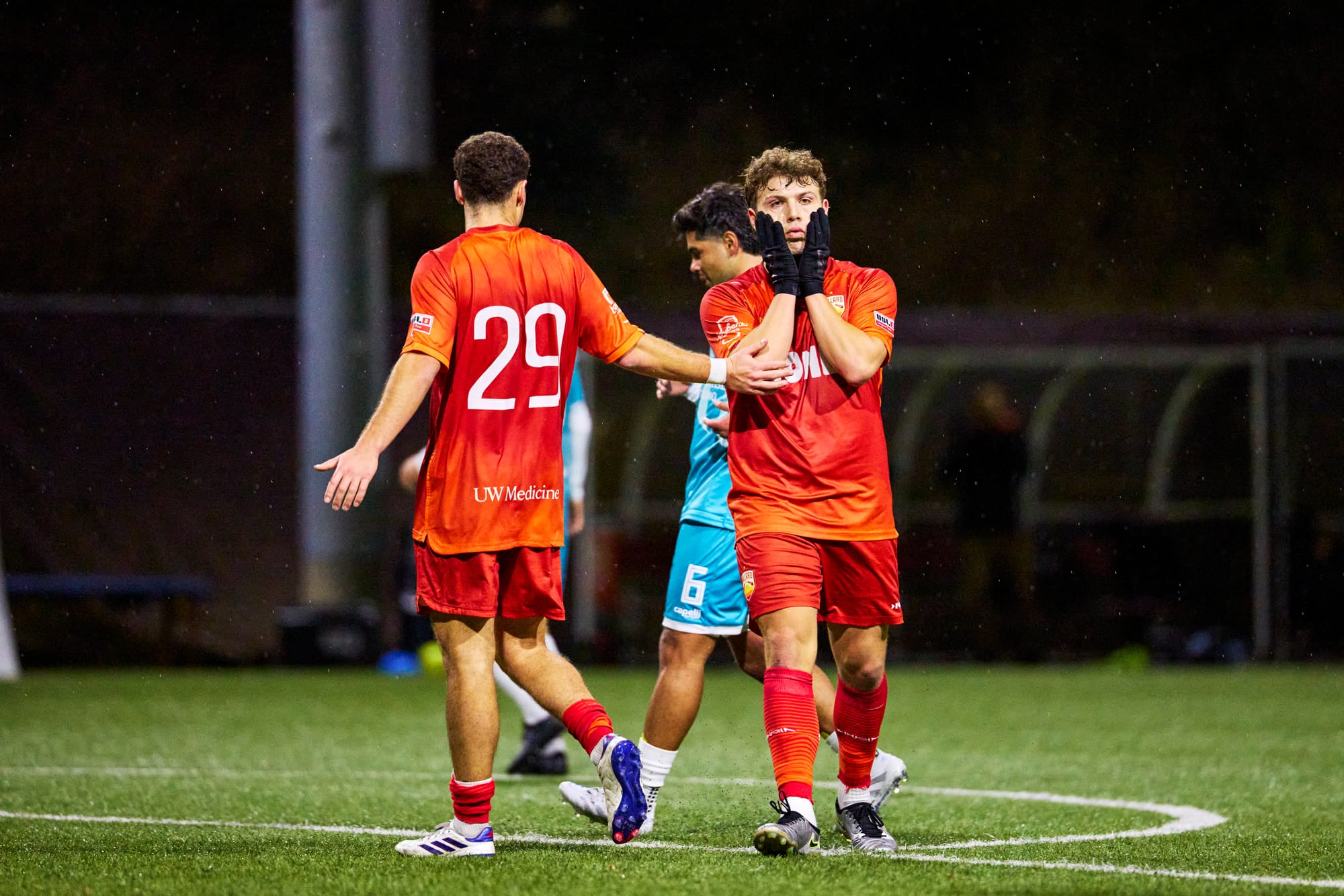
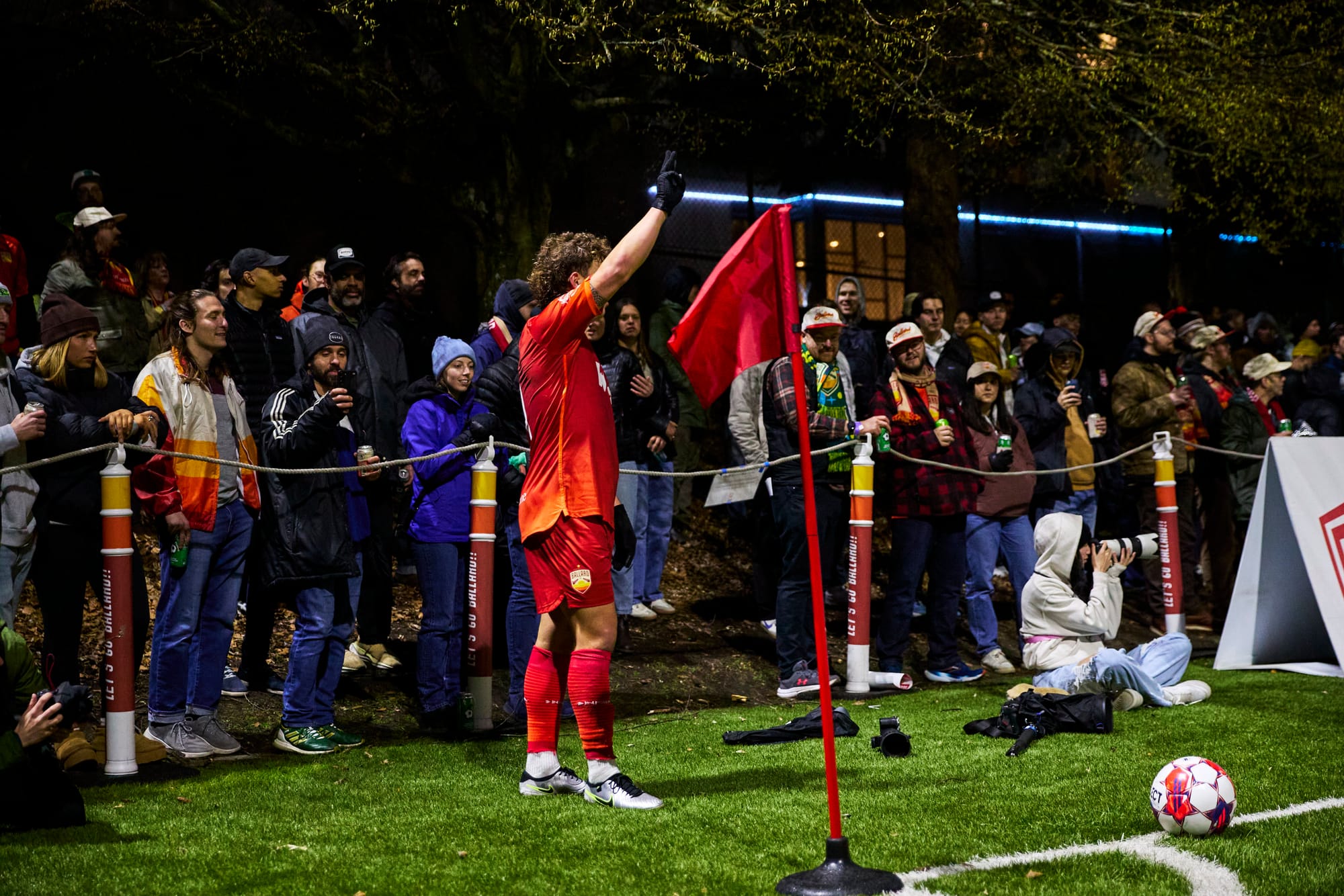
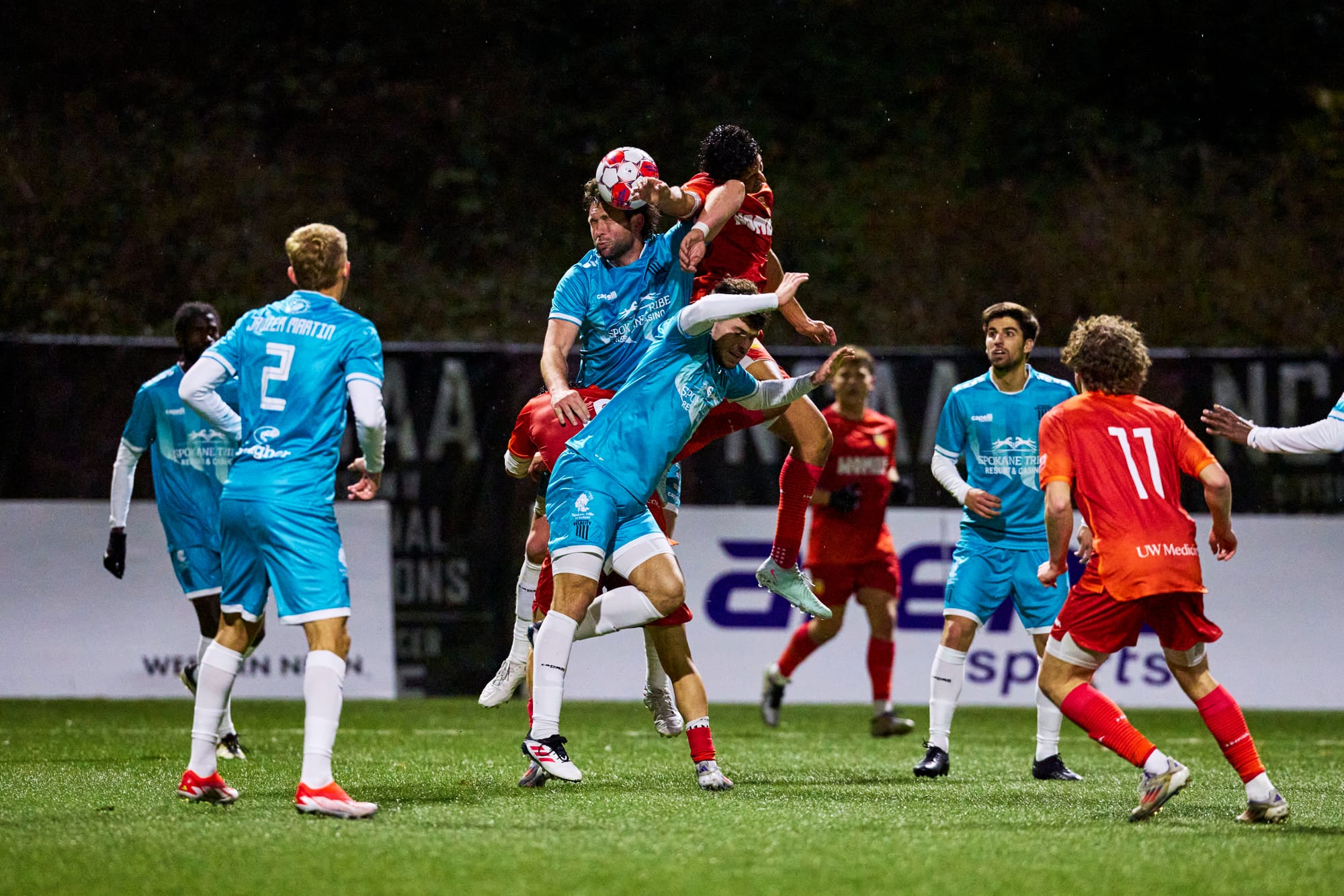
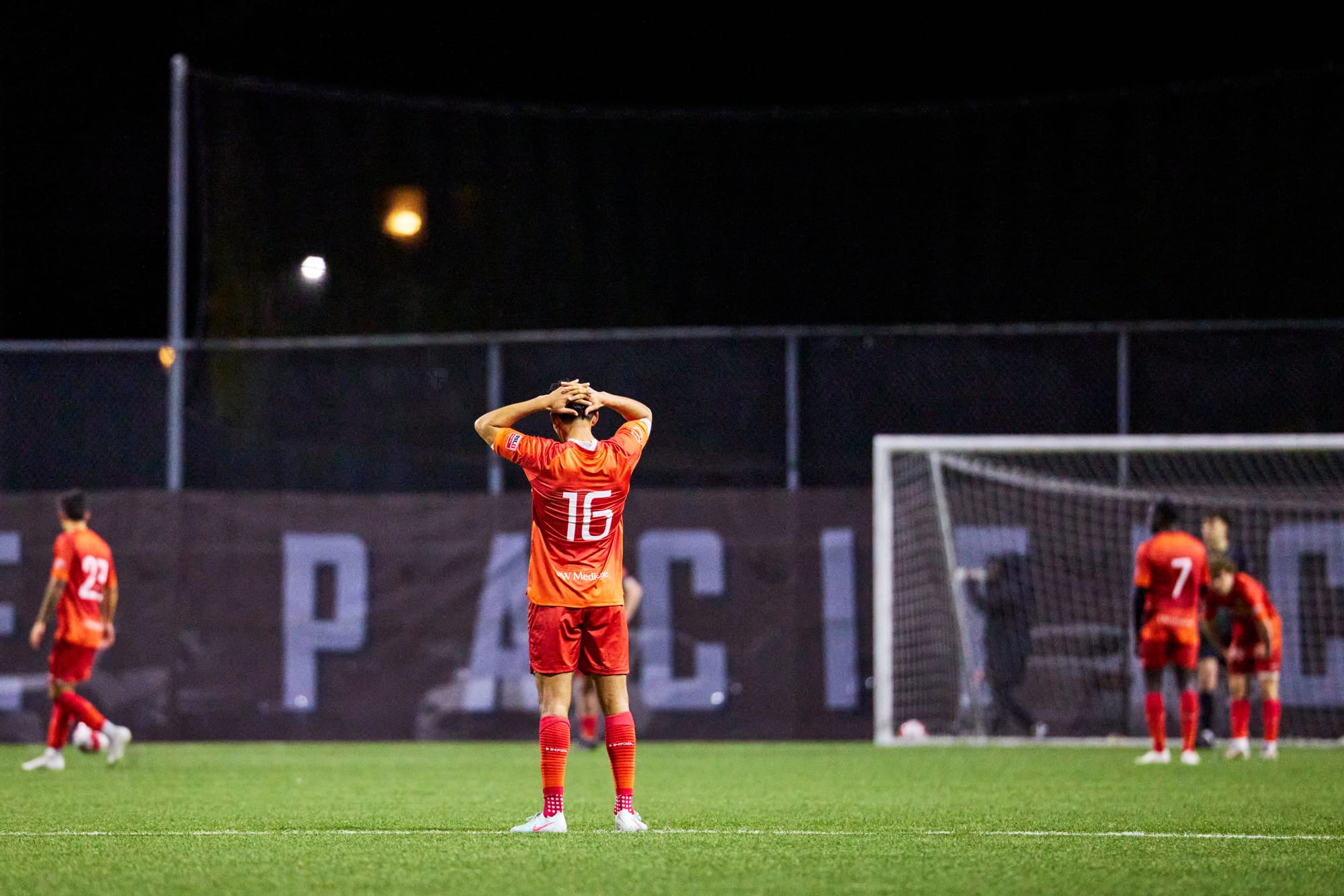
Scenes from Ballard’s match against Spokane. Photos provided by Ballard FC.
Among the reasons we gravitate to sports, witnessing authentic conflict around real stakes may be the most universal. That’s why so many leagues have playoffs. It’s why the most-watched events across the world are cup finals.
This is also a big reason why soccer is the world’s most popular sport. For virtually every league in the world, there’s something more than a league championship at stake. Winning your local league usually allows you to play in a bigger tournament or a higher league, a truism constant all the way to the top of the sport. The potential to climb to your country's highest ranks creates moments with real stakes.
That was partly on display in Interbay. For Ballard FC – a team competing in U.S. Soccer's fourth tier, League Two of the United Soccer League – it was for another chance to measure themselves against professional-level opponents.
“You look at a night like last night and while the result didn’t go our way, it was so special,” Ballard FC President Sam Zisette recently told Sounder at Heart. “It’s really unique, it makes us who we are and it taps into a need in this city for that kind of experience. It’s why we started this club in the first place.”
But what if instead of playing for a spot in the second round of the U.S. Open Cup, Ballard were playing for a spot in a higher league, along with the revenue and attention that comes along with it?
While once a fantasy, those stakes promise to be a USL reality in the not-so-distant future. On March 15, 2025, the organization announced plans to adopt promotion and relegation. That came shortly after the USL unveiled plans to create a Division One league that would – at least by U.S. Soccer's division standards – be on par with MLS. According to the reporting on the vote, current USL owners were overwhelmingly in favor of the plan that would be put into play for the 2028 season. Velocity were among the teams who voted to approve the plan, citing the match against Ballard as a sort of preview of what could be.
“The point is it makes games of jeopardy and that matters to fans,” Velocity owner Ryan Harnetiaux said. “I was actually sorry that somebody had to lose that game.
“The bottom line is that kind of game that was played is a classic promotion/relegation race game and it felt like that.”
While Spokane is currently the only team in the Pacific Northwest who plays in one of the USL’s two professional leagues (USL Championship and USL League One), they will soon have company. Boise is slated to launch a USL1 team in 2026. They’re expected to enter alongside another USL1 team in Eugene, who had previously played in USL2.
Closer to home, the USL is in “advanced talks” with the city of Everett, according to USL officials, about partnering with minor league baseball’s AquaSox on a dual-use downtown stadium that would potentially house a USL1 team as well.
The subtext is any or all of those teams could eventually find themselves playing in Division One if they get there on sporting merit.
There are also seven teams around the Puget Sound who are slated to play in USL2 this year. Several have expressed interest in potentially turning professional.
While the Seattle Sounders, Portland Timbers and Vancouver Whitecaps dominated the soccer landscape for the last 50 years, the scene could look very different in the next five to 10 years with promotion-and-relegation potentially fueling that movement.
“It does change things in that it’s really intriguing,” Zisette said. “It gives you something to play for that’s more than a trophy. We all compete for trophies, that’s the bedrock of sport. The idea that there’s more to that is almost a whole reframing. I found myself reframing the prospect of USL League One. There’s more incentive, there’s more intrigue, there’s more interest.”
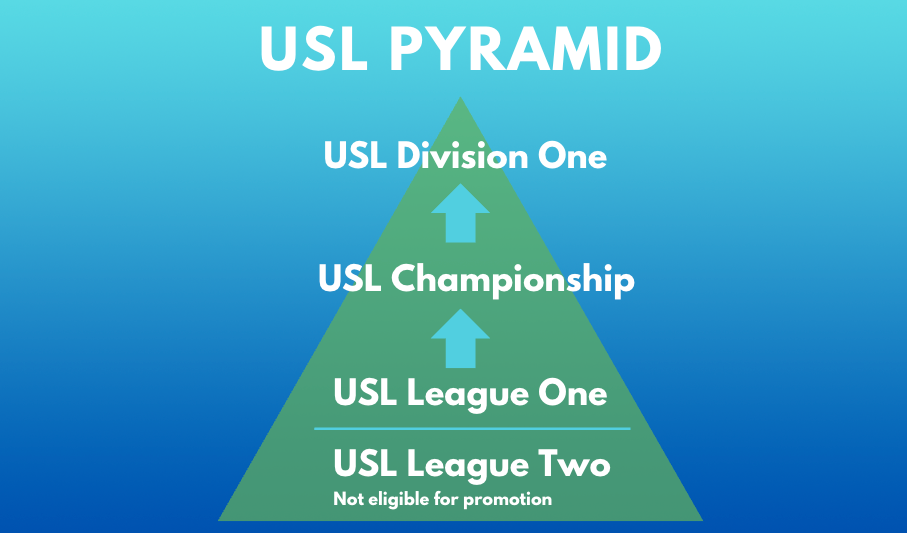
New to U.S., but not the world
For previous generations of soccer fans in the United States, pro/rel (as it’s commonly known) was an almost fantastical concept. The book “Bloody Confused” was written by veteran American sports journalist Chuck Culpepper, who had moved to London in 2006. The first-person account focused mostly on Portsmouth’s attempt to stay in the Premier League, but it is more broadly about Culpepper’s crash-course in a sporting landscape that, largely because of pro/rel, felt so foreign.
Fast-forward to 2025, and pro/rel is a much more mainstream concept in American sports culture. From documentaries like Netflix's “Sunderland ‘til I die” and more popularly FX's “Welcome to Wrexham” to mainstream successes like Apple's “Ted Lasso”, casual sports fans have been exposed to the idea of advancing up or falling down a competitive pyramid based purely on sporting merit.
In theory, at least, the biggest and richest clubs could find themselves tumbling out of the top division, potentially replaced by neighborhood clubs who worked their way up. It's a story beloved around the world. When the powers of European football threatened to create a Super League – which ran anathema to pro/rel – there were literally protests in the streets, and the plan was scrapped. Some of the richest people in the world gave in to popular opposition. Aside from the UEFA Champions League final, the match that determines which team from the English Championship will be promoted to the Premier League is one of the most watched club matches of the year.
Of course, it remains something that has only happened in practice elsewhere.
Even going back to the earliest days of professional soccer in the United States, we’ve never had merit-based pro/rel.
The main reason for that is relatively simple: money. Although there may have been early plans to bring pro/rel to the United States along with the 1994 World Cup, those plans never came close to fruition. To get interest from investors with deep pockets, the league's organizers needed to provide security.
Even that hasn’t always been enough.
The original NASL had some highs — including in Seattle, which was among the league leaders in attendance — but the league never had two consecutive seasons with all the same teams playing in all the same cities. Unsurprisingly, the league didn’t make it to 20 years. Since 1992, more than 150 professional men’s and women’s soccer teams folded for one reason or another.
On the flip side, one reason cited as key to MLS's success is the certainty of its model. Without pro/rel, your MLS team will always be an MLS team. It's a big reason why owners are willing to spend $500 million or more on expansion fees and invest even more in infrastructure like stadiums and training facilities. It’s why many teams are enjoying valuations that are on par with the top teams in the world even without the same levels of popularity, local relevance or sporting quality.
While that progress has been great for MLS, it's been more of a mixed bag outside of the league. The USL now has 38 independent professional teams — the most it has ever had — but virtually all are losing money and none of them have valuations close to their MLS counterparts.
It also has created an incentive for USL to try something that is at least in part meant to differentiate itself in the marketplace.
“We have the ability to capture a lot of the benefits of promotion through the fan intrigue and excitement without the devastating financial impact like you have in most places around the world,” USL Deputy Chief Executive Officer Justin Papadakis said. “We’re a league that wants to match the ambitions of our clubs.
“Investment follows opportunity, and you know on the investor side they see the pathway to Division One. They see the excitement that pro/rel brings and so that’s why 2025 is going to be the largest acceleration ever in soccer in terms of the number of teams and stadiums being announced and built.”
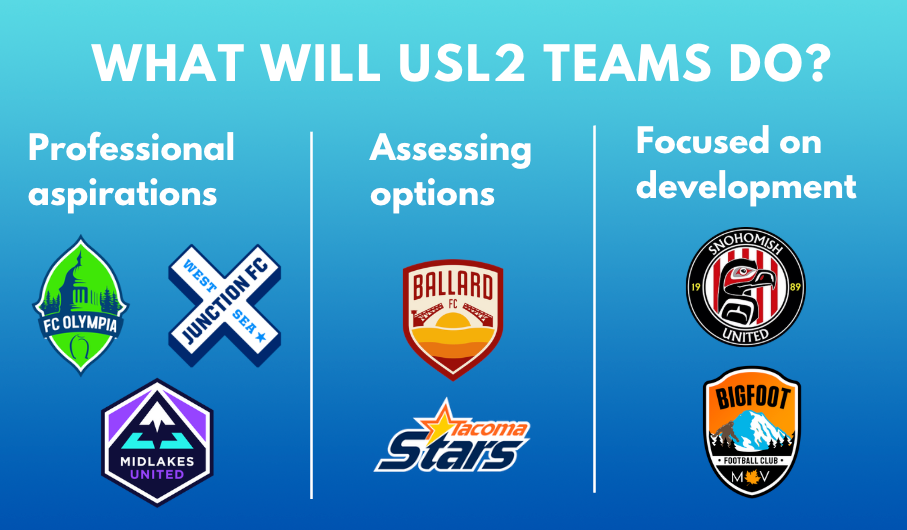
How local teams are impacted
Locally, those ambitions run the gamut. After talking to leadership of all seven of Puget Sound's USL2 teams, it’s clear that some are focused on entering the professional ranks, others are very happy to remain pre-professional and some are taking more of a wait-and-see approach.
Considering their options
On paper, Ballard FC seem to be best positioned to make the professional leap. Started by a group of friends and envisioned as a neighborhood club, the amateur outfit already enjoy a level of local relevancy virtually unheard of in USL2. They routinely sell out their 1,500-seat stadium and were drawing even more when they played their home games at Seattle Center's Memorial Stadium last year, and their merch can be spotted all around town.
They also have a degree of sporting relevance other local teams don’t have. Ballard won the USL2 national championship in 2023, have played in two straight Open Cups and have graduated a handful of players to the pro ranks, with defender Leo Burney becoming the first to sign a MLS Homegrown deal with the Sounders. Several others have signed with the Tacoma Defiance, the Sounders' developmental team that plays in the third-tier MLS Next Pro.
But Zisette is also pragmatic when it comes to taking on the costs associated with turning Ballard FC into the pro ranks.
“The counterpoint is it's really expensive and really risky,” said Zisette, who admits they’d have to bring on additional owners if they were to make the leap. “There are people willing to take that risk, but you have to have a pretty big net worth and access to capital. You can’t just snap your fingers.”
As exciting as the possibility is of turning professional and pursuing a Wrexham-like ascent, the reality is Ballard have carved out what feels like a sustainable model. Professional soccer teams routinely lose six or seven figures a year and there’s no guarantee success will ever push a team into the black.
Maybe the biggest obstacle Ballard would face is having a place to play. They’ve effectively maxed out what can be achieved at Interbay and the only upgrade option that seems remotely realistic is a renovated Memorial Stadium. That project is supposed to start at some point this year but probably won’t be finished until 2027.
That timeline works just fine for Ballard, but there are still a ton of unknowns such as how the building’s charter will determine its use, including everything from how much it would cost to rent to how often it would be available.
“There’s still so much to learn about that,” Zisette said. “We’re talking to them and trying to understand the inner workings of it but there’s no practical next steps or details.
“That’s the only path for us or another group at some point. It’s one we’re exploring but I wouldn’t say we’re full-steam ahead.”
Tacoma Stars owner Lane Smith is in a somewhat similar position, but after a decade of owning professional soccer teams his eyes are also wide open.
Smith has been running the indoor version of the Stars since 2014 and they’ve been fully professional since 2015, playing their games at Kent’s Showare Center. He also operated the Sounders Women in the USL’s W-League and the Sounders U23s in the precursor to USL2, prior to launching the Stars' outdoor team last year.
Tacoma is a market ripe for outdoor professional soccer and for a spell it had two teams, the Tacoma Defiance in the USL Championship and Reign FC in the National Women's Soccer League. There were plans to build a soccer-specific facility next to Cheney Stadium, but they were indefinitely shelved when Covid-19 crunched budgets and were effectively killed when the NWSL raised minimum stadium requirements and the Reign decided to move back to Seattle.
The Stars are playing at Bellarmine Prep, which works fine for USL2 but is not suitable for pro soccer. Barring a stadium solution, Smith doesn’t see a way forward.
“It would be an aspiration to have a pro team,” Smith said. “But it’s all about the revenue you can generate. We’d need a place to play and Tacoma doesn’t have one at the moment.”






